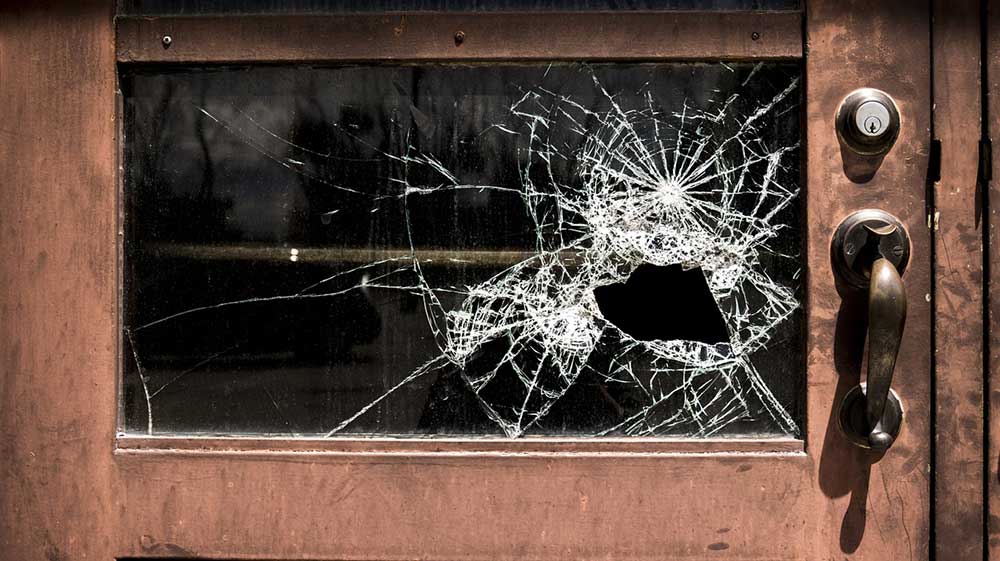
Safe Spaces, Happy Faces: How Employers Benefit When They Prioritise Workplace Security
99% of all private sector enterprises in the UK are small businesses, accounting for £1.9tn turnover and 60% of UK private sector employment. The disruption caused by a burglary can dramatically affect a business and its employees. These losses are not only caused by the cost of replacing equipment but the greater impact of time and resource in sorting out the aftermath of a burglary. The ramifications of these costs can be felt even more broadly given these small businesses are the backbone of the UK’s economy – over £1.8bn.
Is your business based in London? Then it is worth reading the latest statistics on crime, which show which areas of the city have the highest crime rate. You may be surprised by what you read. The spike in crime rates has rightly left many people concerned about security. Do you have the right security to help prevent burglary, robbery, vandalism and other threats to your business?
Between May 2016 and May 2018, there were more than 149,851 burglaries across London. While there is not clear how many of these specifically affected businesses, what is clear is that these types of crime cost businesses dearly and have a knock-on effect on employee safety.
The latest Office for National Statistics crime survey* shows that Westminster has the most total crime, with 124,900 crimes recorded between May 2016 and May 2018. Just behind it is Southwark with 91,850 and Croydon with 72,023. If we look at the five types of crime most likely to happen to businesses, then the statistics show that Barnet has the highest rate of burglary, vehicle crime, and damage/ arson, coming third for shoplifting. Interestingly, and surprisingly, robbery rates are highest in the City of London; and shoplifting also appears to be a popular pastime. It is quite worrying that robbery (which differentiated from other forms of theft (e.g. burglary, shoplifting or car theft by its inherently violent nature) is taking place in a part of the capital where over 483,000 people are employed in 24,420 businesses. It may not come as a surprise to see that shoplifting is also high in the borough of Westminster (which is virtually adjacent to the City). Croydon also appears to be a hot spot for crime, coming second overall for burglary, robbery and vehicle crime.
| Borough | Burglary | Robbery | Vehicle Crime | Shoplifting | Damage and Arson |
| Barnet | 9503 | 1857 | 12019 | 7494 | 9221 |
| Westminster | 7859 | 4784 | 9323 | 10745 | 4991 |
| Southwark | 5682 | 2982 | 5731 | 3795 | 8808 |
| Croydon | 9494 | 5055 | 11373 | 5537 | 6977 |
| Newham | 5205 | 1781 | 5246 | 3946 | 7939 |
| City of London | 5414 | 3701 | 5950 | 10050 | 3466 |
New research commissioned by Verisure revealed the average property loss reported by senior decision-makers in the event of a burglary is £2k. Furthermore, 37% of small businesses keep equipment worth £10k or more on their premises, according to the findings. Horacio Perez, operations director, said:
“99% of all private sector enterprises in the UK are small businesses, accounting for £1.9tn turnover and 60% of UK private sector employment. The disruption caused by a burglary can dramatically affect a business and its employees. These losses are not only caused by the cost of replacing equipment but the greater impact of time and resource in sorting out the aftermath of a burglary. The ramifications of these costs can be felt even more broadly given these small businesses are the backbone of the UK’s economy – over £1.8bn.”
47% of all burgled small businesses were targeted more than once, potentially increasing the financial impact to around £2.8bn. Small businesses in the manufacturing sector were the worst affected by burglaries with 10% of senior decision makers saying their current workplace had been burgled in the past three years. 9% of senior decision makers surveyed in business less than five years’ old had experienced a burglary in the last year. The FSB released new statistics in 2016 which stated that the average cost of crime per business affected was just under £6,000, and that is without factoring in the emotional cost and damage that can occur to business owners and employees.
Opportunistic
These burglaries lack any obvious planning and involve burglars taking advantage of poor security measures and/ or vulnerable points of a building such as an insecure door or window to enter the premises. They seldom try to overcome the alarm system and will be in and out of the building as fast as possible. The lack of planning means they take relatively little – typically only what can easily be carried off and removed from the premises quickly.
Smash and Grab
These burglaries involve criminals using paving stones or other heavy objects to smash windows and gain entry to the premises. In these types of incidents, stolen vehicles are often used to ram their way into shops and help the thieves make a speedy getaway. In some cases, they take only the goods in the window so will target stores with expensive items on display. As with other crimes involving the misuse of motor vehicles, ram-raiding raises serious public safety issues. The amount of damage caused in each incident also makes repairs particularly expensive. Smash and grab attacks are usually to the front of the building and are carried out at great speed to avoid the effects of the alarm. Most are over within a minute.
Sophisticated
In these incidents, burglars overcome alarm systems in various ways to allow themselves more time to act. They may be able to do this through inside information or, more likely, through careful observation over a period of time of a premises’ security measures. Another common ploy is to set the alarm off repeatedly and wait until the police and key holders stop responding to it. With the alarm disabled the burglars can enter unobtrusively, forcing open back doors or windows. Their usual target is high-value stock and sometimes the safe which is often removed entirely. Often their exit route is different from that used for entry.
You will have already noticed that CCTV is everywhere in London. While that’s true on many city streets, there is no guarantee that public CCTV will offer any protection to your business. CCTV should be your first line of defence against crime and it can be used in a number of ways. For example, if you need to see who is coming into the reception area of your office or milling about at the back goods-in area, then CCTV system can do this. Keeping an eye on people not only helps to prevent crime but can make staff feel safer too. The best CCTV systems are motion-activated and linked to a monitored response, and have motion activated or timed lights and in some cases, loudspeakers that the monitoring centre can use to challenge the intruders.
GDPR regulations stipulate that clear signage must be used when you use CCTV, rather than being an issue this actually signals to a potential intruder that they are being watched – this makes you a much less appealing target. Combine CCTV with a panic button under your counter in case you’re on the premises and needing some protection, and you can give your staff the feeling of being secure at all times. A SmokeCloke device (a fog generator) can also be very useful for out of hours burglaries to minimise the loss from a break in.
Another system worth investing in is video surveillance. This is a 24/7 monitoring system which can be used indoors or outdoors and can be connected to an external monitoring station. Many systems are accessible remotely on your phone, meaning that you can stay on top of any potential threats to your business quickly. Video surveillance systems allow you to:
A biometric access control system can replace the need for keys, fobs or pin codes. These systems range from simple single-entry fingerprint readers through to more complex multipoint entry systems. With a biometric fingerprint reader, you decide who has access to your business premises; unauthorised people cannot gain access. Biometric fingerprint readers are widely accepted as being one of the most secure and affordable forms of biometric control. With the addition of a bolt-on package, many systems can be used to track time and attendance as well, so employee management becomes easier and less time-consuming. Tracking time and attendance is a good deterrent to internal crime and this system works well with video surveillance.
If your business is in an area where there are high recorded incidents of burglary, robbery, vehicle crime, vandalism or arson, then it makes sense to invest in a security system if you want to prevent crime from happening in the first place.
Almas Industries are market leaders, innovators, manufacturers and installers of CCTV, Biometric Access Control and Intruder Alarms. We are able to provide integrated systems to retail, wholesale and commercial premises. You can arrange your free, no-obligation security survey by calling us on 0333 567 66 77. If you prefer, you can always send a confidential email via enquiries@almas-industries.com.


